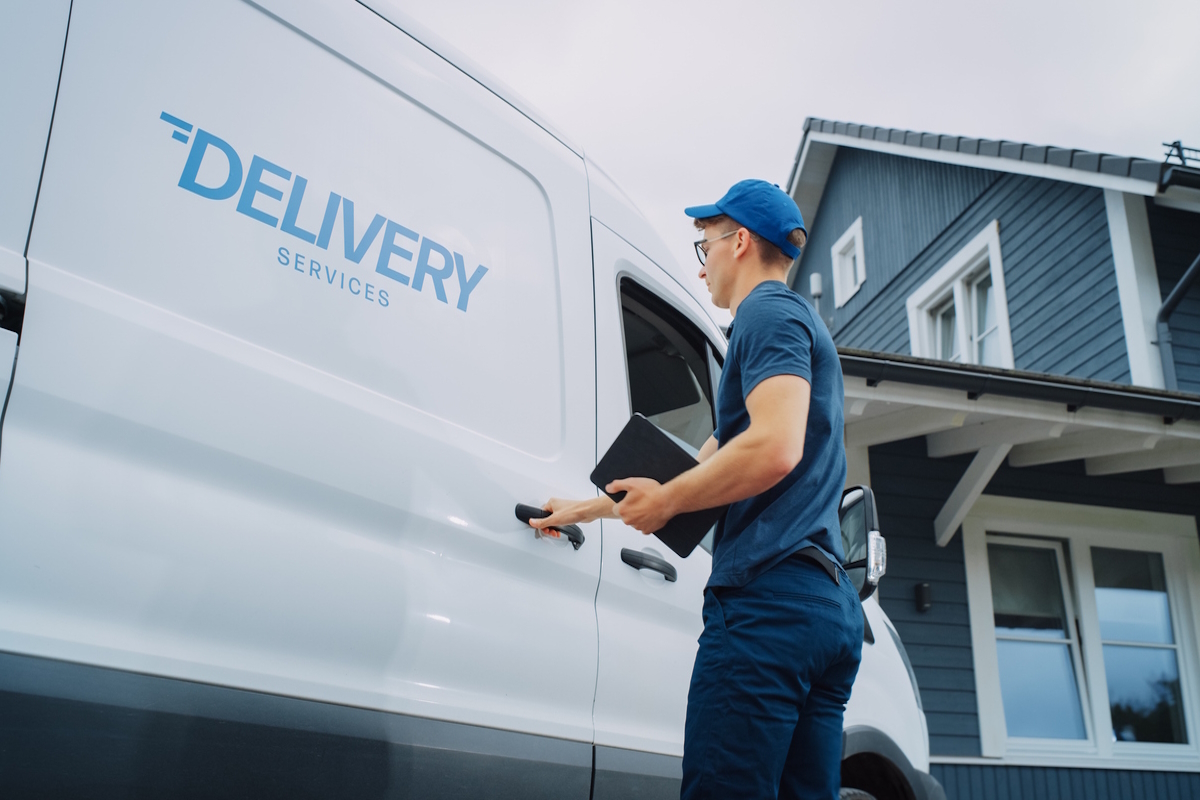Winning the last-mile delivery race with data context

Dan Adams at Precisely argues that the difference between success and failure for door-to-door deliveries can rely on the accuracy, consistency, and context of the data driving it
From packaged goods to Friday night takeaway, door-to-door deliveries have become an integral part of many daily lives, so much so that they are barely given much thought – until something goes wrong.
With the increasing popularity of food delivery services and online shopping offering same-day delivery, expectations are growing higher than ever – meaning fast, affordable, and error-free shopping experiences are expected every time.
To help keep pace with these demands, companies are refocusing their approach to last-mile delivery, and increasingly recognising the critical role that accurate, consistent, and contextual address data plays in its success.
By employing a robust data integrity strategy that includes geo addressing and data enrichment capabilities, organisations can unlock more context from their data – helping to ensure seamless order processing, more accurate information on addresses, and ultimately, lead to even happier customers.
What is last-mile delivery and why is it so important?
Last-mile delivery, also known as final-mile delivery or hyper-local delivery, is the final step in a parcel’s journey, typically when it moves from a distribution centre to its final destination. Whether it’s a package out for delivery from a nearby warehouse or a food delivery from a local restaurant, the different forms of last-mile delivery often share one thing in common – they play an important role in the customer experience and can significantly influence brand perception.
A recent survey by PwC showed that retailers and their customers rate accuracy as their highest priority for last-mile delivery, with 60 percent ranking this as a key concern – placing it even higher than other important purchasing factors such as speed or convenience.
Research has also revealed that nearly a third (32 percent) of customers state they would be likely to stop shopping from a brand they love after just one bad experience. It’s easy to see why companies are feeling mounting pressure to ensure there are no errors when it comes to delivering the right order to the right place at the right time.
The importance of ensuring error-free last-mile delivery cannot be overstated. However, challenges with deliveries can become inevitable if organisations don’t have the right tools in place to effectively manage their data.
How data impacts last-mile delivery success
Often, last-mile delivery challenges can be traced back to incomplete, low-quality address data. For instance, if a customer lives in an apartment complex, but secondary address information (in this case, let’s say their unit number in the building) isn’t captured. The delivery driver arrives at the location but has no context as to where to leave the package. The driver then needs to rely on either guesswork or direct contact with the customer – creating confusion and inconvenience for all parties involved.
We’ve all experienced the frustrations of having to track down a parcel that was mistakenly delivered to a neighbour’s home, or the disappointment of a fresh pizza being delivered to us cold.
Ultimately, a seemingly small omission like an apartment unit can amount to big consequences, like failed deliveries or increased delivery times, negative customer experiences, and an increase in customer – and driver – attrition.
Considering how frequently used and foundational address data is for retailers and other organisations, its utilisation needs to be as seamless as possible. However, leveraging addresses to inform decision-making is an extremely complex and ever-growing challenge.
Addressing the data challenges
To better use address data and unlock more powerful customer insights, organisations can adopt geo addressing solutions and data enrichment as key elements of their data integrity strategy. Geo addressing combines geocoding – which pinpoints exact locations according to a specific latitude and longitude – with address verification and autocompletion capabilities.
This helps to ensure that addresses are verified, standardised, and cleaned for maximum accuracy. Each address is associated with a hyper-accurate location (or geocode) and assigned a unique and persistent identifier. This process streamlines the multiple components of an address into a simple code, turning the data into a more reliable dataset and enabling easy enrichment with third-party data.
Smart autocomplete features also suggest full addresses as soon as a customer starts to type them in, helping to create a more frictionless buying experience. This is crucial because studies show that, on average, a staggering 70 percent of online shopping carts are abandoned before purchases are made.
In concert with address verification, these capabilities ensure that deliveries reach their intended destination without any challenges and customers enjoy a smooth order experience.
Context is key
As mentioned above, enriching datasets is a crucial step in the process to ensure that deliveries reach their intended destination without any challenges. Data enrichment combines first-party data from internal sources with third-party data from external sources or data from other internal systems. This helps improve the accuracy of an organisation’s data while providing more meaningful insights about assets, customers, and potential risks.
When it comes to last-mile delivery, data enrichment can greatly help to improve delivery success rates. Being able to unlock more specific knowledge about a location, such as whether or not it’s in a gated community, or details on other useful property attributes, can greatly help drivers to more accurately locate the intended destination – and therefore reduce the likelihood of delivery failure.
The future of last-mile delivery
It seems clear that, when it comes to last-mile delivery strategy, the difference between success and failure can rely on the accuracy, consistency, and context of the data driving it. But, with smart geo addressing and data enrichment capabilities, customers can operationalise their address data, turning it into a powerful component of their business.
In an era where a single delivery mishap can significantly impact customer loyalty, investing in a robust approach to ensuring the accuracy of address data, simplifying data enrichment processes, and, ultimately, unlocking crucial context from data is imperative for staying competitive and winning the last-mile race.
Dan Adams is senior vice president, data strategy and operations, at Precisely
Main image courtesy of iStockPhoto.com and gorodenkoff

Business Reporter Team
Most Viewed
Winston House, 3rd Floor, Units 306-309, 2-4 Dollis Park, London, N3 1HF
23-29 Hendon Lane, London, N3 1RT
020 8349 4363
© 2025, Lyonsdown Limited. Business Reporter® is a registered trademark of Lyonsdown Ltd. VAT registration number: 830519543





